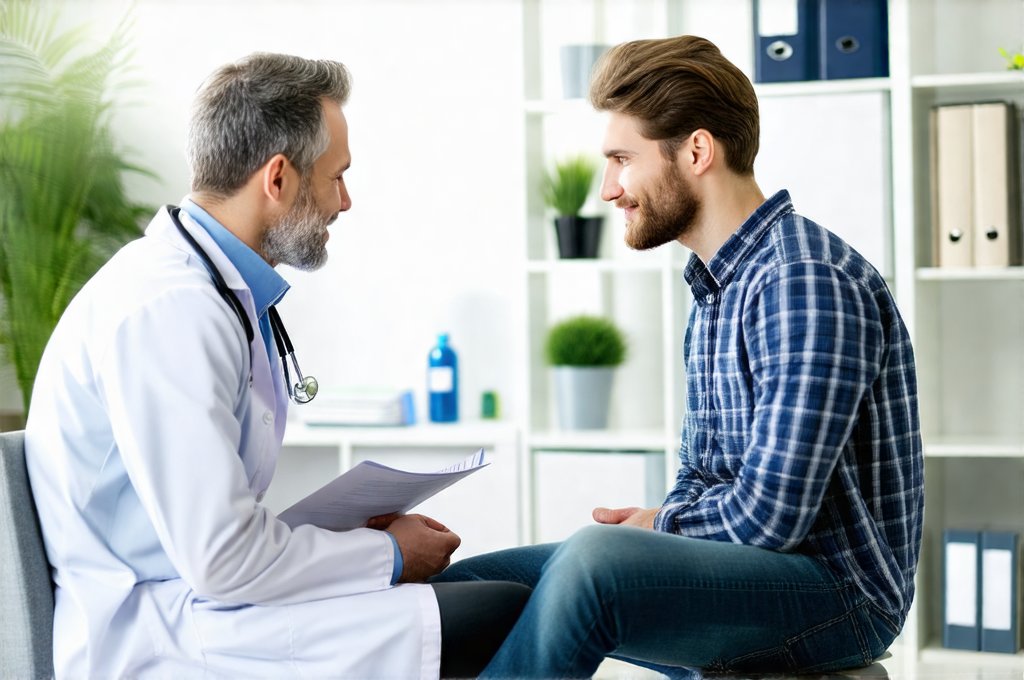The sensation of needing to constantly rush to the bathroom, or feeling like your bladder is always full, can be profoundly disruptive to daily life. For many, this isn’t simply an inconvenience – it’s a source of anxiety, social isolation, and diminished quality of life. While numerous factors can contribute to overactive bladder (OAB) and related urinary issues, including neurological conditions, hormonal changes, and lifestyle choices, the role of dietary magnesium is often overlooked. Magnesium plays a crucial part in muscle function, nerve transmission, and overall cellular health, all of which directly impact bladder control. Understanding how incorporating more magnesium-rich foods into your diet can potentially support healthy bladder function offers a proactive and natural approach to managing these frustrating symptoms.
Beyond its well-known benefits for bone health and energy production, magnesium is deeply involved in regulating the nervous system. Specifically, it helps calm overactive nerves that contribute to involuntary bladder contractions – the hallmark of OAB. When magnesium levels are insufficient, muscles can become more irritable and prone to spasms, including those within the detrusor muscle (the muscle responsible for emptying the bladder). This means a deficiency could potentially worsen urinary frequency, urgency, and even incontinence. Focusing on food sources of magnesium rather than relying solely on supplements is generally recommended, as dietary intake provides other essential nutrients and allows for better absorption when combined with other foods. Understanding what foods that often cause irritation can help too.
Understanding Magnesium’s Role in Bladder Health
Magnesium isn’t a quick fix, but it’s an integral component of overall bladder health. The detrusor muscle, responsible for storing and releasing urine, relies on calcium to contract. However, excessive calcium influx can lead to involuntary contractions – the very thing we’re trying to avoid in OAB. Magnesium acts as a natural calcium channel blocker, helping to regulate calcium flow and prevent these unwanted spasms. Think of it like a balancing act; magnesium helps keep calcium levels in check, promoting smoother muscle function and potentially reducing urinary urgency. This regulatory effect extends beyond just the bladder muscles, influencing nerve impulses that signal the urge to urinate, leading to more controlled bladder behavior.
Furthermore, chronic stress can deplete magnesium levels, creating a vicious cycle where stress exacerbates OAB symptoms and OAB symptoms increase stress. Magnesium supports the adrenal glands, which are crucial for managing stress response, helping to lower cortisol levels (the “stress hormone”). By reducing overall stress and anxiety, magnesium indirectly contributes to better bladder control. It’s important to note that individual magnesium needs vary based on factors like age, gender, activity level, and health status; however, many people don’t consume enough through their diet alone.
High-Magnesium Foods for Bladder Support
A diverse range of foods naturally contain substantial amounts of magnesium. Leafy green vegetables are a powerhouse – spinach, kale, and collard greens should be staples in any bladder-supportive diet. Nuts and seeds, particularly almonds, cashews, pumpkin seeds, and chia seeds, offer both magnesium and healthy fats that aid absorption. Legumes like black beans, kidney beans, and lentils are also excellent sources, providing fiber alongside essential minerals. Dark chocolate (with a high cocoa percentage) is a surprisingly beneficial treat, offering a delicious way to boost your magnesium intake – in moderation, of course!
Beyond these common choices, consider incorporating whole grains like quinoa and brown rice into your meals. Avocados provide both healthy fats and magnesium, while bananas are a convenient source of this vital mineral. Even certain types of fish, such as salmon and mackerel, contain modest amounts of magnesium along with omega-3 fatty acids that support overall health. Prioritizing these foods doesn’t require drastic dietary changes; simply making conscious choices to include them in your regular meals can significantly impact your magnesium levels. A good starting point is looking at foods that naturally ease bladder issues.
Boosting Magnesium Absorption
Maximizing the benefits of magnesium requires understanding how your body absorbs it. – Vitamin D is essential: Vitamin D helps facilitate magnesium absorption in the gut, so ensure you’re getting enough through sunlight exposure or supplementation (if needed). – Minimize phytic acid: Phytic acid found in grains, legumes and seeds can inhibit magnesium absorption. Soaking these foods before cooking can reduce phytate levels. – Limit calcium intake at the same time: While both minerals are important, high calcium intake can interfere with magnesium absorption. Space out your consumption of calcium-rich foods from magnesium-rich ones.
Another crucial factor is hydration. Magnesium requires adequate water to function effectively and be transported throughout the body. Dehydration can exacerbate OAB symptoms and hinder magnesium’s ability to regulate bladder function. Aim for at least eight glasses of water daily, adjusting based on your activity level and climate. Finally, remember that stress management techniques like meditation, yoga, or deep breathing exercises can help reduce cortisol levels and improve magnesium utilization. Incorporating stretching routines that relax pelvic muscles can also aid in overall wellbeing.
Foods to Limit for Bladder Irritation
While focusing on increasing magnesium intake is beneficial, it’s equally important to identify foods that might irritate the bladder and worsen symptoms. Caffeine, alcohol, carbonated beverages, spicy foods, artificial sweeteners, and acidic fruits (like citrus) are commonly known bladder irritants. These substances can increase urinary frequency and urgency in some individuals. Identifying your personal triggers is key – keeping a food diary to track what you eat and how it affects your bladder can be incredibly helpful.
It’s not necessarily about completely eliminating these foods, but rather moderating consumption and being mindful of their impact on your individual bladder sensitivity. For instance, switching from coffee to herbal tea or reducing the amount of citrus fruit in your diet might make a noticeable difference. Combining these dietary adjustments with increased magnesium intake can create a synergistic effect, promoting healthier bladder function and improved quality of life.
Creating a Bladder-Friendly Meal Plan
Developing a meal plan centered around high-magnesium foods and minimizing irritants is a proactive step toward managing OAB symptoms. A sample day might look like this: – Breakfast: Oatmeal with almonds, chia seeds, and blueberries (blueberries are lower in acidity than other berries). – Lunch: Spinach salad with grilled salmon, avocado, and quinoa. – Dinner: Lentil soup with kale and a side of brown rice. – Snacks: A handful of cashews or a small square of dark chocolate.
This is just a starting point; personalize your meal plan based on your preferences and dietary needs. The goal isn’t deprivation, but rather mindful eating that supports overall health and bladder function. Remember to stay hydrated throughout the day and incorporate stress-reducing activities into your routine. Consulting with a registered dietitian or healthcare professional can provide tailored guidance and ensure you’re meeting your individual nutritional requirements. Consider what foods that calm an irritated bladder might fit best in your plan.





















